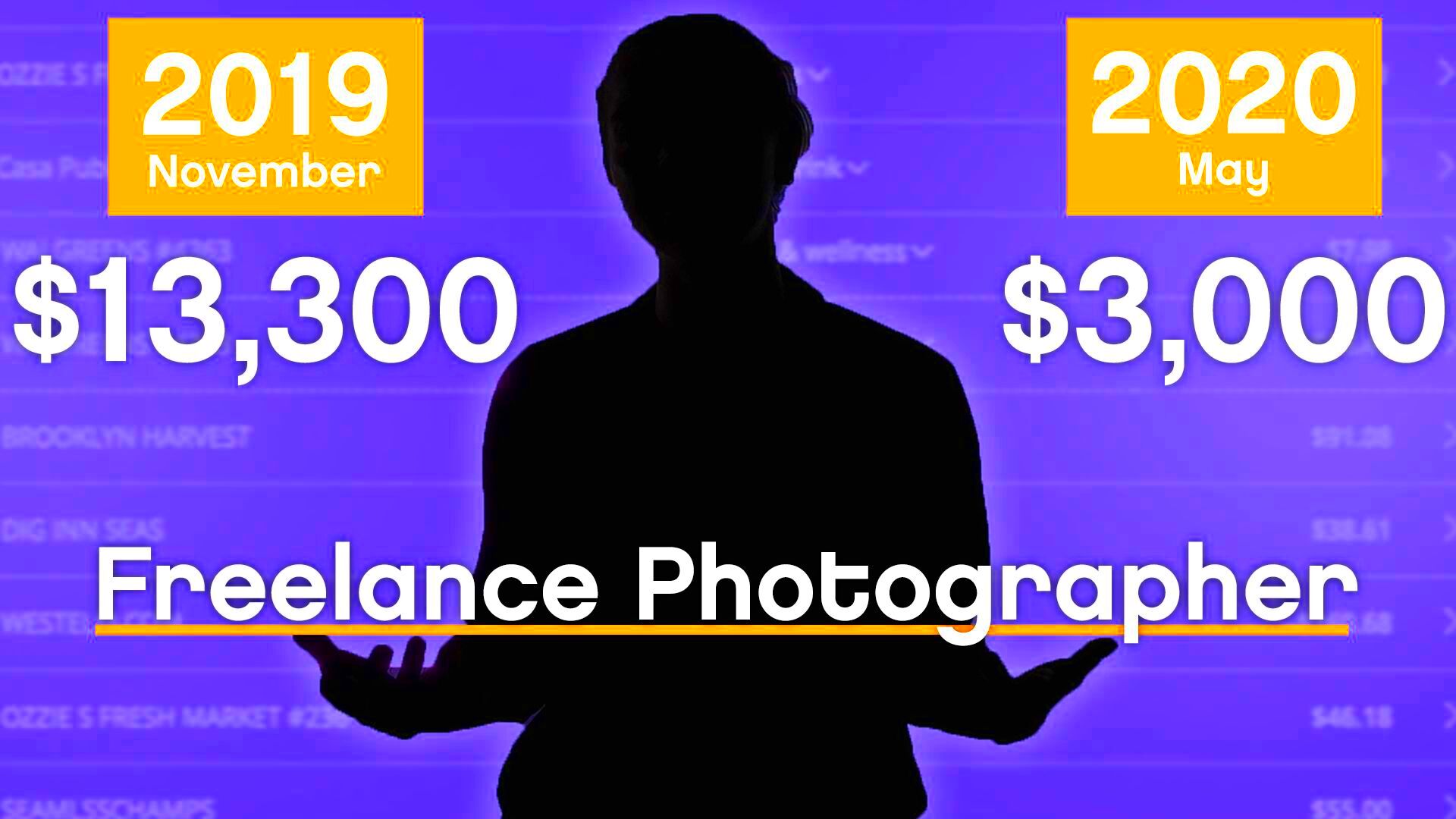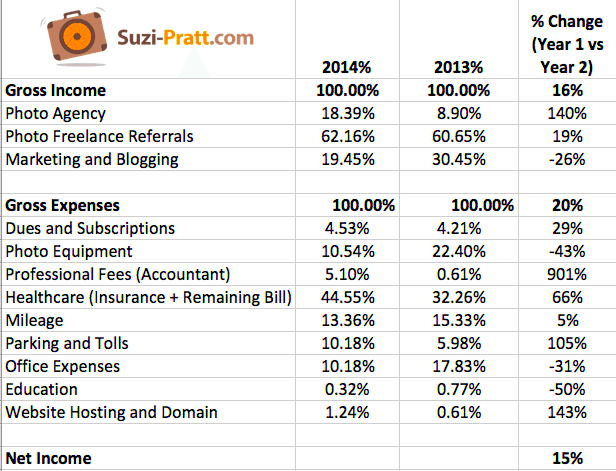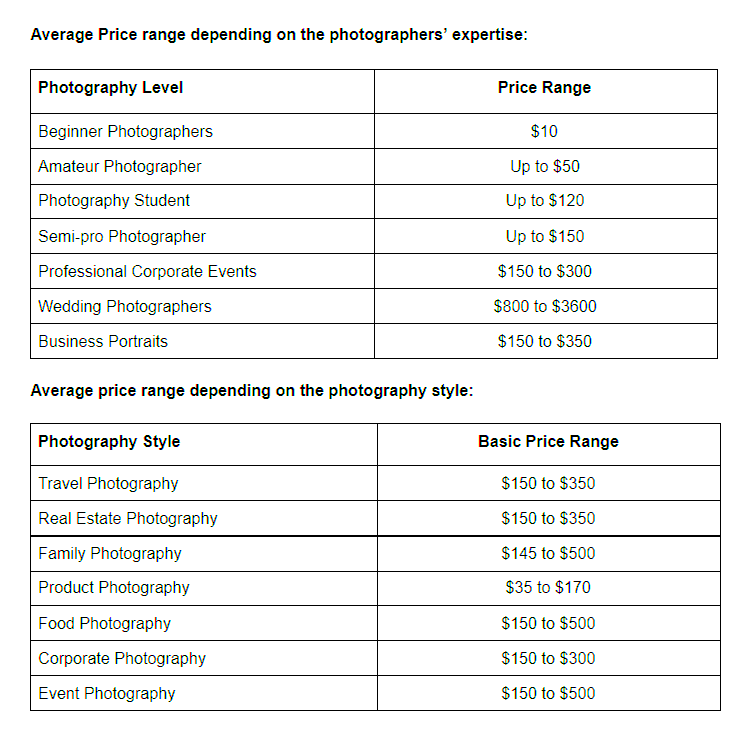Freelance photography is an industry that combines artistry with commerce. For photographers entering this realm it's essential to grasp your potential income and determine your pricing. When I embarked on my journey I was taken aback by the wide range of earnings. Whether it’s photographing weddings or documenting corporate gatherings each assignment has its own pricing standards. Familiarizing yourself with these intricacies can assist you in establishing rates and aligning expectations. So let’s explore the factors that influence your income and how to navigate pricing strategies.
Factors Affecting Freelance Photography Charges

There are several factors that affect how much you can charge as a photographer. Here are the key ones.
- Experience and Skill Level: Just like any profession, the more experienced and skilled you are, the more you can charge. When I started out, I charged modestly. As I gained experience and honed my craft, I gradually increased my rates.
- Type of Photography: Different types of photography have different price ranges. For instance, a portrait session might cost less than a commercial product shoot. Each niche has its own pricing standards.
- Location: Your geographical location can affect pricing. In metropolitan areas like Mumbai or Delhi, you might charge more compared to smaller towns. The cost of living and market demand play a big role.
- Client Type: Corporate clients often have larger budgets compared to individual clients. Tailoring your rates based on the type of client can help in setting appropriate charges.
- Project Complexity: A simple headshot will cost less than a complex project involving multiple locations and extensive editing. Be sure to factor in the complexity when setting your price.
Also Read This: What is Fiverr for Beginners?
Average Rates for Different Types of Photography

Grasping the typical rates can serve as a solid foundation for determining your own pricing. Based on my insights here’s a general overview to consider:
| Type of Photography | Average Rate (INR) |
|---|---|
| Portrait Photography | 5,000 - 15,000 |
| Wedding Photography | 30,000 - 1,00,000 |
| Event Photography | 10,000 - 50,000 |
| Commercial/Product Photography | 20,000 - 75,000 |
| Editorial Photography | 15,000 - 40,000 |
These figures are simply estimates and can differ depending on factors like where you are, your level of expertise and the details of the project. When I began my journey I used these ranges as a reference point but I tweaked my rates according to the unique requirements of my clients and the standard of my work. It's crucial to be adaptable and stay informed about market trends to stay ahead in the game.
Also Read This: How to Make Money on Fiverr in Iraq
How to Determine Your Pricing

Figuring out how to price your services as a freelance photographer can be a mix of emotions. When I first got into it, I found it challenging to navigate all the different aspects to take into account. However, through some experimentation I discovered a handful of strategies to establish rates that not only represent the worth of my work but also remain competitive in the market.
To assist you in determining your rates here is a breakdown of the process.
- Assess Your Costs: Start by calculating your expenses, including equipment, software, and any other tools you use. When I first started, I underestimated the cost of maintaining my gear, so be thorough in this assessment.
- Evaluate Your Time: Consider how much time you spend on each project, from shooting to editing. It’s crucial to factor in not just the hours you spend on-site but also the time you invest in post-production.
- Research Industry Standards: Look at what other photographers in your niche and location are charging. This research can provide a benchmark for your rates. I remember comparing my rates with others in my city to ensure I wasn’t pricing too high or too low.
- Factor in Your Skill Level: As your skills and experience grow, you should adjust your pricing accordingly. When I improved my photography techniques and built a strong portfolio, I gradually increased my rates to reflect my enhanced expertise.
- Consider Your Target Market: Think about who your clients are and what they are willing to pay. Tailoring your pricing to match your target market can help attract the right clients.
Finding the price point involves weighing your expenses, the worth of your offerings and prevailing market rates. Continuously evaluating your pricing approach can help keep it fair and competitive throughout your journey.
Also Read This: Can You Earn a Living on Fiverr?
Expenses Freelance Photographers Should Consider
Managing a photography venture goes beyond taking photos. Through my experience I've come to understand the importance of monitoring different costs to stay financially sustainable. Here’s an overview of typical expenses you should keep in mind.
- Equipment Costs: This includes cameras, lenses, tripods, lighting, and other gear. High-quality equipment is essential but can be expensive. I’ve invested a significant amount in upgrading my gear to meet professional standards.
- Software and Editing Tools: Professional editing software like Adobe Photoshop and Lig
Also Read This: How to Set Up a Fiverr Account Professionally
Maximizing Your Earnings as a Freelance Photographer
To increase your income as a photographer it's not solely about raising your fees. It's also about implementing tactics that improve your business and draw in more customers. When I began my journey I primarily concentrated on establishing my pricing. However over the years I've come to understand that enhancing my earnings involves blending creativity with acumen.
Here are some strategies to boost your income:
- Diversify Your Services: Offer a range of services beyond traditional photography. For instance, you can add photo editing, custom prints, or photo books to your offerings. I found that offering additional services helped me cater to different client needs and increased my income.
- Build a Strong Portfolio: A well-curated portfolio showcasing your best work can attract higher-paying clients. Invest time in building a portfolio that highlights your unique style and skills. I often update my portfolio with new projects to keep it fresh and relevant.
- Network and Build Relationships: Attend industry events, join local photography groups, and connect with other professionals. Networking can lead to referrals and collaborations. Some of my best projects came from recommendations from other photographers and clients.
- Upsell and Cross-sell: When working with clients, suggest additional products or services that complement their initial request. For example, if a client hires you for a wedding, offer to create a wedding album or additional prints.
- Leverage Social Media: Use platforms like Instagram and Facebook to showcase your work, engage with potential clients, and build your brand. Social media has been instrumental in growing my client base and getting more exposure for my work.
By putting these tactics into action you can boost your photography business draw in clients and ultimately increase your income.
Also Read This: How to Create Gigs on the Fiverr App
Trends in Freelance Photography Rates
Keeping yourself informed about the changes in freelance photography rates is essential for staying competitive. The photography field, similar to various other industries, adapts to new trends and market preferences. By keeping an eye on these trends you can modify your pricing to stay up to date.
Here are a few trends that are currently shaping photography pricing.
- Increased Demand for Digital Media: With the rise of digital content, clients are often looking for high-quality images for their online presence. This has led to higher rates for digital photography projects compared to traditional print work.
- Focus on Social Media Content: Many businesses are investing in professional photography for their social media channels. This trend has driven up rates for content specifically designed for social media platforms.
- Higher Rates for Specialized Photography: Niche areas such as drone photography or 360-degree imaging are in demand, and clients are willing to pay a premium for these specialized services.
- Shift Towards Package Deals: Clients often prefer package deals that include multiple services (e.g., a full-day shoot, editing, and prints) over paying a la carte. This trend allows photographers to offer comprehensive solutions at a bundled price.
- Remote and Virtual Photography: The rise of virtual events and online meetings has created a niche for remote photography services. This trend has opened up new opportunities and pricing structures for photographers working from a distance.
By staying aware of these trends you can adjust your offerings and pricing approaches to align with market needs and seize new prospects that arise.
Also Read This: How Much Do You Make on Fiverr? A Comprehensive Guide
FAQ about Freelance Photography Charges and Earnings
How much should I charge for a freelance photography session?
Pricing varies based on your experience, the type of photography, and location. A good starting point is to research local rates and consider your costs and experience. For example, in my early days, I charged around ₹5,000 for a basic portrait session, and as I gained experience, I increased my rates accordingly.
What expenses should I consider when setting my rates?
Consider equipment costs, software subscriptions, marketing expenses, insurance, and travel costs. Keeping track of these expenses helps ensure your rates cover your costs and generate a profit. I learned this by meticulously tracking my expenses and adjusting my rates to stay profitable.
How can I negotiate higher rates with clients?
Be confident about your work and communicate the value you bring. If a client’s budget is lower than your rate, explain the quality and expertise you offer. Offering flexible packages or additional services can also help justify your rates. I often use client feedback and successful past projects as evidence to support my pricing.
What are some ways to increase my freelance photography income?
Diversify your services, build a strong portfolio, network, upsell additional products, and leverage social media for marketing. Implementing these strategies can attract more clients and increase your earnings. For example, I found that expanding my services and using social media effectively led to more projects and higher income.
In this section I tackle questions and share helpful suggestions drawn from my journey as a photographer.
Conclusion on Freelance Photography Income
Freelance photography can be a fulfilling career with the potential for significant income if approached wisely. Through my own experiences I've discovered that achieving success in this field goes beyond capturing stunning photographs; it also involves effectively managing your business. It's essential to set rates, keep track of your expenses and stay informed about market trends to optimize your earnings. Keep in mind that every photographers journey is different and what works for one individual may not work for another. Be flexible and open to growth as you gain more experience and witness changes in the industry. Nurture your love for photography continuously improve your abilities and possess a strong sense, for business. Your commitment and effort will be reflected in your income and the satisfaction of your clients.




